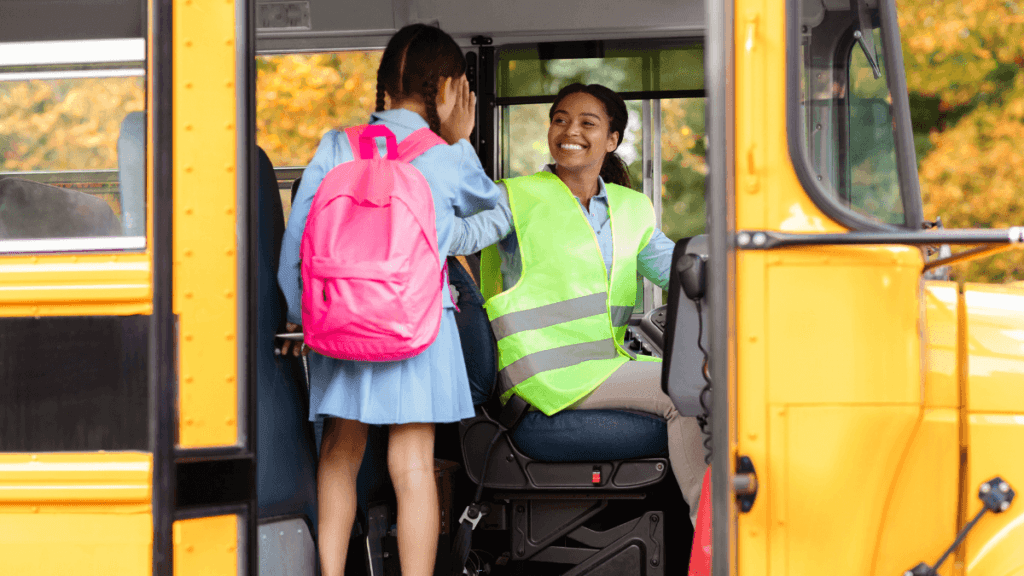Ensuring the safety of children who use school transport is a top priority for South African parents. With many children relying on public or private transport services to get to school, it’s important to understand the steps you can take to make the experience safer and stress-free. Below, we provide practical School Transport Safety Tips to help parents protect their children while they commute.
Understanding the Risks of School Transport
School transport, whether provided by the government, private operators, or informal minibus taxis, comes with certain risks. These include:
- Overcrowding of vehicles.
- Lack of proper safety measures, such as seat belts.
- Reckless driving or unqualified drivers.
- Unmonitored pick-up and drop-off points.
- Delays or failure to arrive on time.
Knowing these risks allows parents to take proactive measures to ensure their children’s safety by following these School Transport Safety Tips.
School Transport Safety Tips
1. Choose Reputable Transport Services
When selecting a transport service for your child adhere to the following School Transport Safety Tips:
- Check Licensing and Registration: Verify that the transport provider is registered with relevant authorities and holds the necessary permits.
- Inspect the Vehicle: The transport should be roadworthy, well-maintained, and equipped with essential safety features like seat belts.
- Evaluate the Driver: Ensure the driver has a valid driver’s license, public driving permit (PDP), and a good reputation in the community.
Ask other parents for recommendations and look for services with a track record of reliability.
2. Educate Your Child About Safety Rules
Children need to understand the importance of following School Transport Safety Tips during their commute. Teach them to:
- Wear a Seat Belt: If seat belts are available, children must use them at all times.
- Sit Properly: Avoid standing or moving around in the vehicle while it’s moving.
- Follow Driver Instructions: Listen to the driver or supervisor in case of an emergency.
- Avoid Dangerous Behaviors: Discourage loud talking, fighting, or distracting the driver.
Role-playing scenarios, such as crossing the road safely, can help reinforce these lessons.
3. Monitor Pick-Up and Drop-Off Points
Pick-up and drop-off points can be chaotic, especially in urban areas. To enhance safety:
- Accompany Your Child: When possible, escort your child to and from the transport vehicle.
- Choose Well-Lit Areas: Select pick-up points that are safe, visible, and away from heavy traffic.
- Avoid Last-Minute Rush: Arrive early to reduce the chances of your child rushing across the road or being left behind.
- Teach Road Safety: Make sure your child knows how to cross roads safely and to stay on sidewalks while waiting.
4. Verify Daily Attendance
Always confirm that your child has safely boarded and alighted from the transport:
- Set Up Communication Channels: Establish a system where the transport driver or supervisor updates you when your child reaches their destination.
- Encourage Check-Ins: If your child has a mobile phone, ask them to send a quick text or call when they get to school or home.
5. Look Out for Overloading
Overcrowding is a common issue in South African school transport. Overloaded vehicles not only increase the risk of accidents but can also cause discomfort and stress for children.
- Observe Loading Practices: Watch how many children board the vehicle. If it seems overcrowded, raise concerns with the driver or switch to a safer service.
- Educate Your Child: Teach them to avoid boarding an already full vehicle, even if it means waiting for another one.
6. Advocate for Safe Driving Practices
Reckless driving is a leading cause of road accidents. Parents can help ensure safer driving by:
- Speaking Up: If you notice unsafe driving behavior, report it to the transport service operator or relevant authorities.
- Joining Parent Committees: Collaborate with other parents to monitor and advocate for safe transport practices in your community.
- Conducting Random Checks: Occasionally observe the driver’s behavior or ask your child for feedback.
Tip: How to Improve Your Matric Results in 2025
7. Invest in Reflective Gear
Children who walk to their transport pick-up points often do so during early mornings or evenings when visibility is low. Reflective gear makes them more visible to drivers.
- Buy Reflective Backpacks or Jackets: These items are widely available and easy to use.
- Use Reflective Stickers: Add them to your child’s school bag or clothing.
8. Teach Emergency Preparedness
Equip your child with the knowledge to handle emergencies during their commute:
- Memorize Important Numbers: Ensure they know your contact details and emergency services numbers.
- Practice Emergency Scenarios: Teach them what to do if they feel unsafe, such as leaving the vehicle and contacting you or a trusted adult.
- Carry a Basic First Aid Kit: A small kit with bandages and antiseptic wipes can be helpful.
9. Stay Informed About School Policies
Many South African schools have policies governing transport services. Familiarize yourself with these:
- Supervision on Transport: Check if the school provides supervisors for their buses.
- Reporting Mechanisms: Understand how to report safety concerns to the school or transport provider.
10. Be an Active Participant
Parental involvement is crucial in ensuring school transport safety:
- Engage with Other Parents: Share information and collaborate to address common concerns.
- Participate in Community Forums: Join local discussions on improving transport services in your area.
- Lead by Example: Follow road safety rules when walking or driving with your child to reinforce good habits.
Also read: Affordable School Uniform at PEP Stores: 2025 Back-to-School Made Easy
School transport safety is a shared responsibility between parents, transport providers, schools, and communities. By taking proactive steps, such as selecting reputable services, teaching safety rules, and advocating for better practices, you can significantly reduce risks and give your child a safer commute.
Remember, your involvement and vigilance can make all the difference. Let’s work together to ensure every child reaches school and home safely by following these School Transport Safety Tips!










